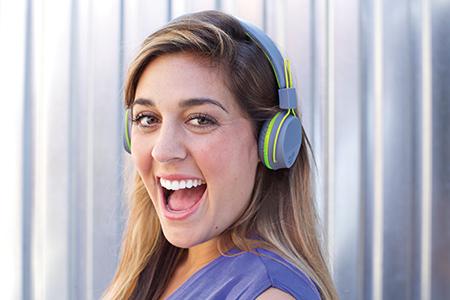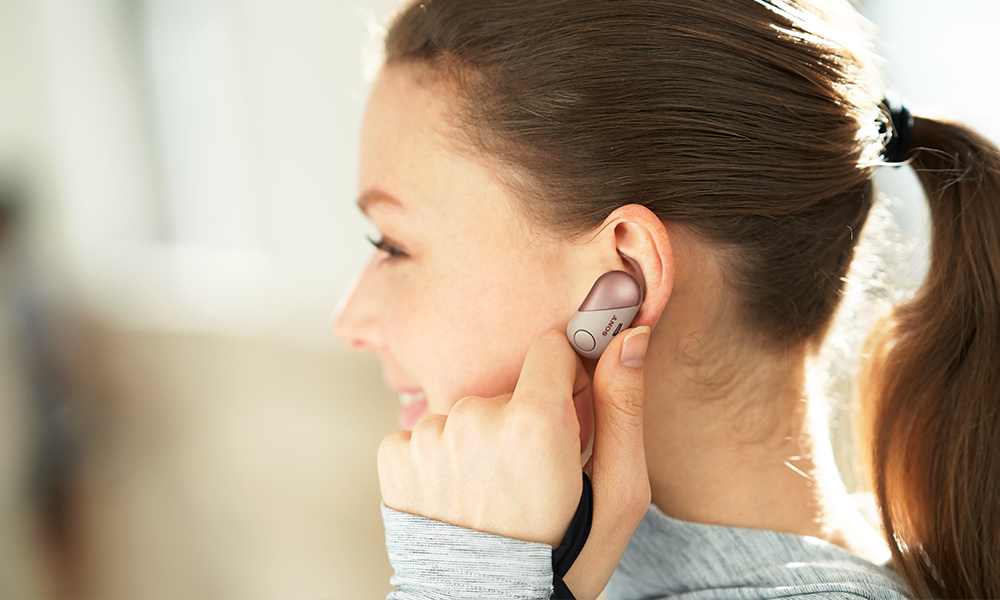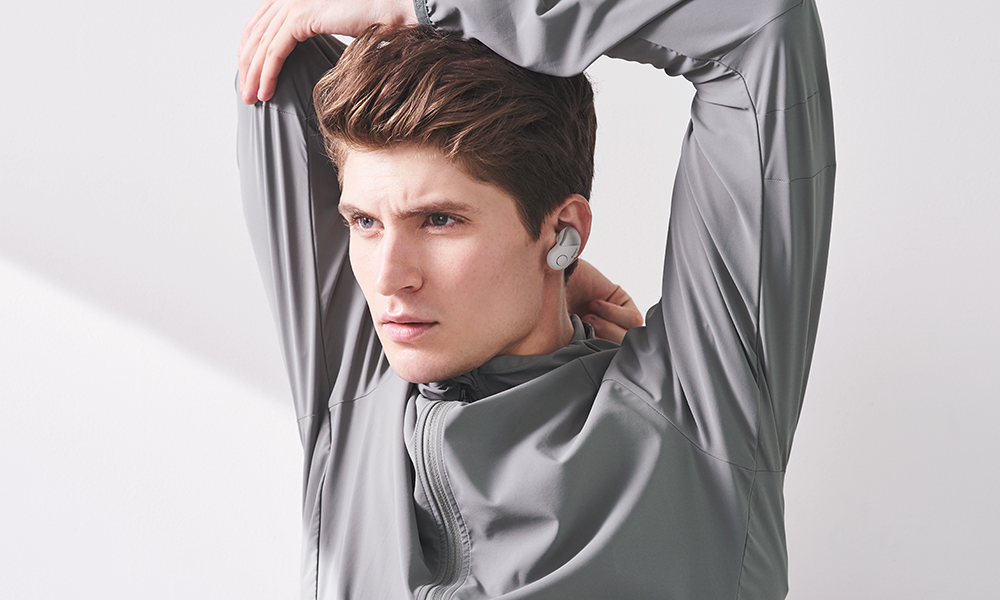 Choosing the best pair of headphones can be tough. With so much choice out there and so many different styles, sizes and features, how do you know which ones will be perfect for you?
Choosing the best pair of headphones can be tough. With so much choice out there and so many different styles, sizes and features, how do you know which ones will be perfect for you?
Let’s break down some of the key decisions you’ll have to make to help you narrow down your choices.
Shop all headphones at Best Buy
What kind of headphone fit do you want?
Headphone fit is a very personal choice. Where some people love a huge over-ear, all encompassing fit with plush ear cushions, others prefer a slimmer, nearly invisible in-ear design.
Over-ear headphones
 Over-ear headphones tend to be the largest headphones out there, and quite often they provide outstanding audio quality. This is due in part to the ability to hide much more extensive hardware into the design.
Over-ear headphones tend to be the largest headphones out there, and quite often they provide outstanding audio quality. This is due in part to the ability to hide much more extensive hardware into the design.
Over-ear headphones can also be extraordinarily comfortable for many listeners, since they don’t invade your ear canal, and they aren’t pressing on the outside of your ear either.
On-ear headphones
 As as the name suggests, on-ear headphones sit directly on the ear itself. They are similar to over ear models, but smaller. This style of headphones are ideal for people who find in-ear models uncomfortable. They’re also ideal for travelers or people needing headphones that will pack down to a more compact size.
As as the name suggests, on-ear headphones sit directly on the ear itself. They are similar to over ear models, but smaller. This style of headphones are ideal for people who find in-ear models uncomfortable. They’re also ideal for travelers or people needing headphones that will pack down to a more compact size.
Earbuds & in-ear headphones
Earbuds or in-ear headphones are the smallest headphones you’ll find.
 Many in-ear headphones also come with a variety of ear tips, fins, and wings. This allows you to get a precise and customized fit. This can have the added advantage of giving your a better sound experience, since there’s no outside noise bleeding in to distract you.
Many in-ear headphones also come with a variety of ear tips, fins, and wings. This allows you to get a precise and customized fit. This can have the added advantage of giving your a better sound experience, since there’s no outside noise bleeding in to distract you.
Wired vs. Wireless
Wired headphones have several advantages; they never need to be recharged, since they just plug right in to your smartphone or device using an AUX jack or charging port. They’re also usually significantly less expensive too.
But wired headphones do have limitations. Since they come with a cable, it can often get twisted or caught up in things, plus, they just plain won’t work with some newer smartphones unless you also buy an adapter to connect them.
When it comes to wireless headphones, you’ve also got some options to choose from. For starters, there are two kinds of wireless headphones: truly wireless and what you might call semi-wireless.
Wireless or semi-wireless headphones?
Semi-wireless headphones, also referred to as simply “wireless,” usually have a cable connecting one ear bud to the other. What ‘wireless’ means in this case is that they don’t use a cable to plug into your smartphone or tablet.
The benefits of semi-wireless headphones is that they sometimes have longer lasting batteries, and may have larger audio drivers, since these can be hidden inside the cables or controls within the cables. Semi-wireless headphones are often less expensive than truly wireless versions.
Truly wireless headphones live up to their name; they’re truly wire free, with no wires connecting them to each other, or to your device. They usually come with a charging case which can hold additional charges, vastly expanding battery life on the go.
What are key headphone features?
There are almost as many features available in headphones as there are types, styles, and makers. We’ll limit this list to some of the most popular and most useful.
Noise canceling & Noise isolation
Noise canceling and noise isolation are two very different features. Noise isolation creates a physical barrier against outside sounds, while noise canceling uses digital technology to cancel out the outside noise so you never hear it.
Ambient Mode
 A feature related to noise canceling is something called Ambient Mode which lets you to bring those outside sounds into your headphones so that you can be aware of your surroundings. This feature is most useful for people who might be walking in busy or high-traffic areas.
A feature related to noise canceling is something called Ambient Mode which lets you to bring those outside sounds into your headphones so that you can be aware of your surroundings. This feature is most useful for people who might be walking in busy or high-traffic areas.
Choosing the right headphones for your life
When making your decision about the right headphones for you, one of the first things you should do is determine how you’ll use them most.
Are you using them on the bus or the train? Do you need an ultra small set to pack into an airplane carry-on? Will you be using them to work out each day, running, swimming? How you plan to use your headphones most often will help you determine the best choice.
Best headphones for sports and fitness
For sports, truly wireless in-ear or earbud style headphones are almost always the best choice. That’s because there’s no wires to get tangled in the fitness equipment, and you can usually get a good tight seal to block out all those unwanted gym sounds.
Best headphones for work
At the office, you likely need to be alert to your coworkers and your boss, but at the same time a loud open plan office can mean distractions galore. That’s why choosing a pair of headphones with noise cancellation or ambient listening mode will be helpful. Depending on your workplace and its flexibility, you may be able to get away with a larger on-ear pair, but if you need to be more discrete, opt for a pair of in-ear models.

Best headphones for travel
The kind of headphones you’ll want for travel will be dictated by how heavy or light you can pack. If you’re a carry-on only business traveler, get the smallest pair of truly wireless in-ear headphones that you can afford. In-ear models have the ability to disguise the fact that you’re listening to anything, while on-ear or over-ear models can send a very clear message; “don’t talk to me”. Yet at the same time, if you’re traveling long haul, you want something with a long battery life, (or just get a no-charge hardwired set) since you may not have a lot of opportunity to recharge.
Once you’ve narrowed down the uses for your headphones and your personal preferences, you’ll see your shopping list has gotten smaller and more manageable.



